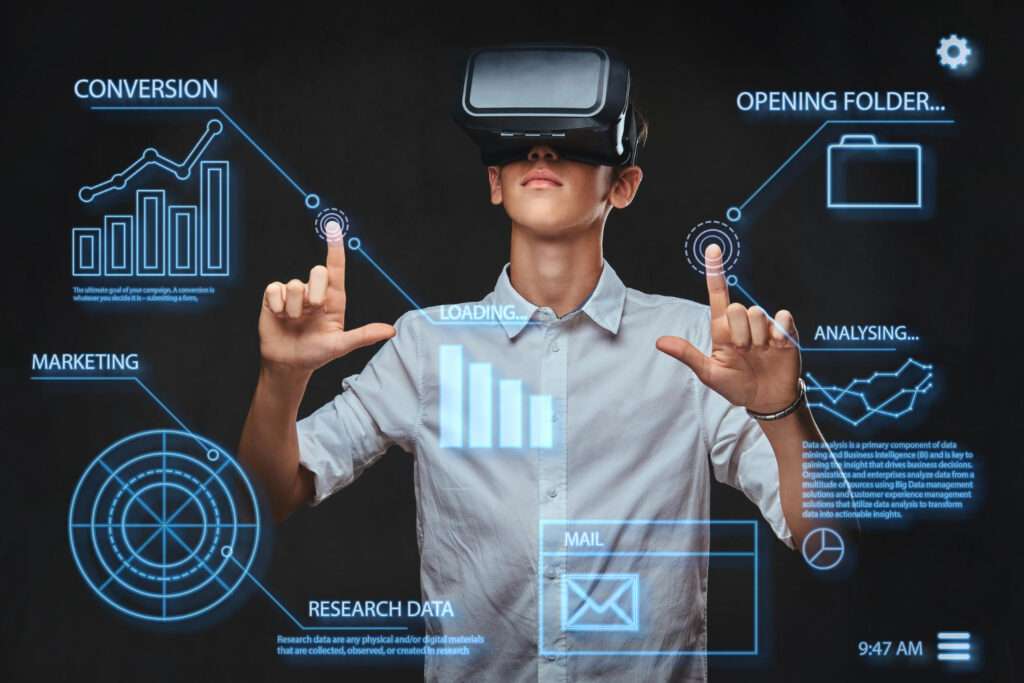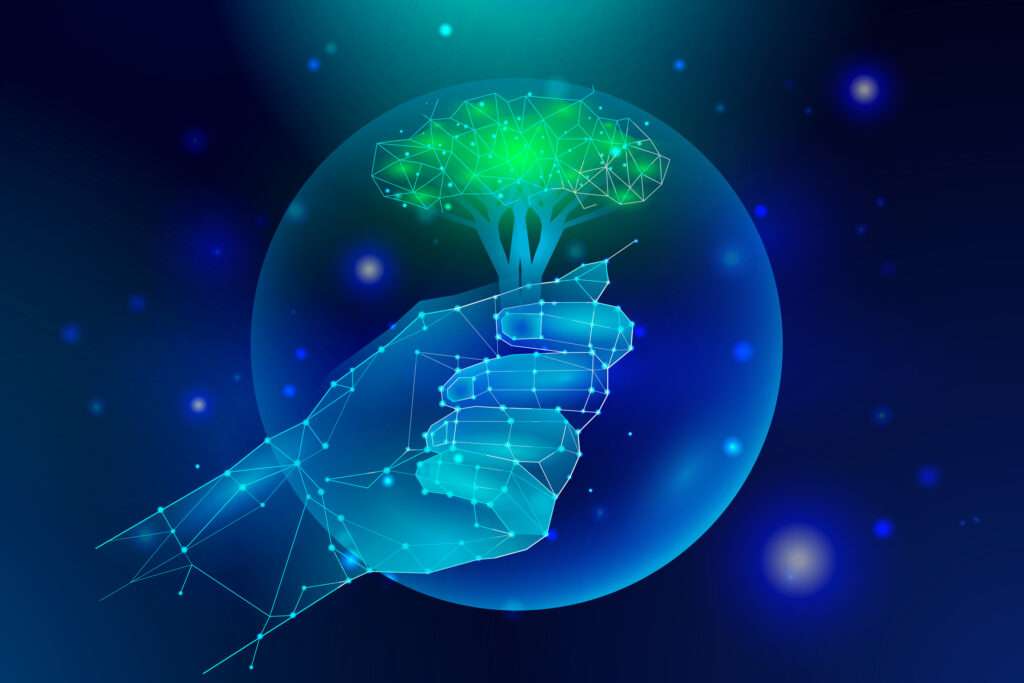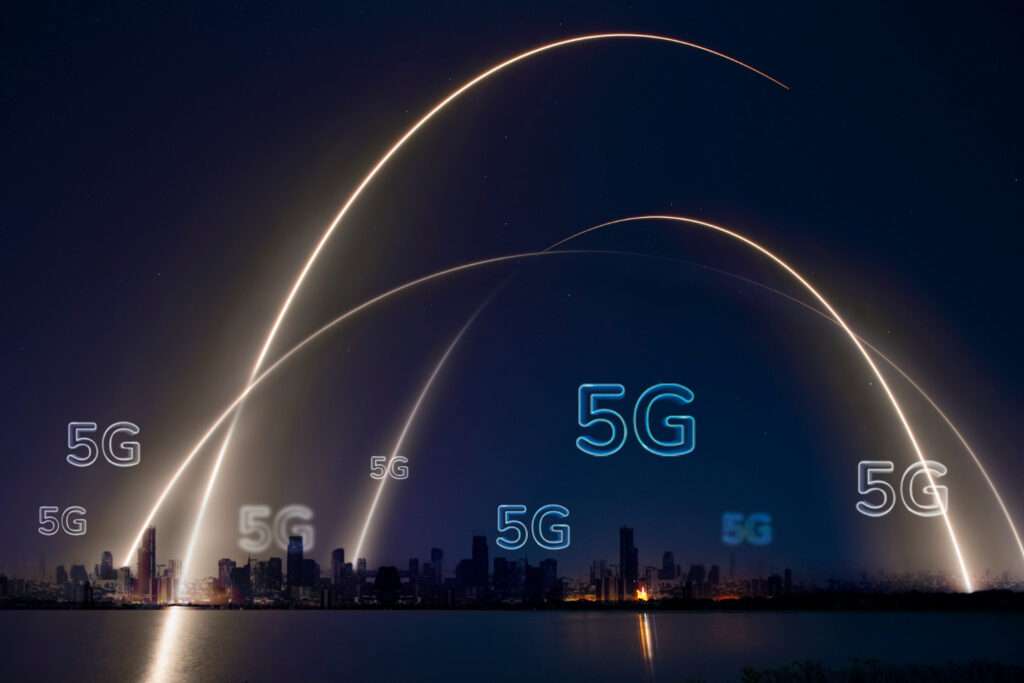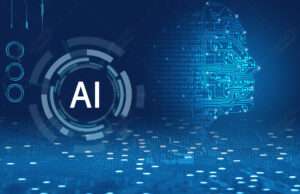Unveiling the Future: Exploring the Latest Computer Technology Trends of 2023
The world’s new technology 2023 in computer science Trends of 2023 is evolving at an astonishing pace, and the year 2023 promises to bring forth an array of groundbreaking advancements. From artificial intelligence to quantum computing, from extended reality to blockchain, various technologies are set to shape our future technology in 2050. In this article, we will delve into the latest information technology trends of 2023, exploring their potential impact on industries and society as a whole. These are the latest technologies in computer science used in World
Artificial Intelligence (AI) Advancements

Machine Learning (ML) and Deep Learning
AI has become a driving force in today’s digital landscape, and in 2023, we can expect even greater advancements in machine learning and deep learning. Machine learning algorithms, fueled by vast amounts of data, enable computers to learn and improve without explicit programming. Deep learning takes this a step further, mimicking the human brain’s neural networks to process complex information and make accurate predictions. These technologies are revolutionizing various sectors, including healthcare, finance, and transportation.
Natural Language Processing (NLP)
Natural language processing, a subset of AI, focuses on enabling computers to understand and interpret human language. In 2023, NLP is poised to enhance communication between humans and machines further. Voice assistants, chatbots, and language translation tools are just a few examples of how NLP is transforming everyday interactions. From customer service to content creation, NLP holds immense potential in streamlining processes and improving user experiences.
Computer Vision
Computer vision involves the ability of computers to analyze and understand visual data, including images and videos. The advancements in computer vision in 2023 will lead to significant breakthroughs in areas such as autonomous vehicles, surveillance systems, and medical imaging. By enabling machines to perceive and interpret visual information, computer vision opens up a myriad of possibilities for innovation and automation.
Edge Computing and the Internet of Things (IoT)

Benefits of Edge Computing
Edge computing brings data processing closer to the source
, reducing latency and enhancing real-time capabilities. In 2023, we can expect edge computing to gain more traction, particularly with the proliferation of the Internet of Things (IoT) devices. By processing data locally, at the edge of the network, edge computing enables faster response times and improved efficiency. This technology is crucial for applications that require near-instantaneous data processing, such as autonomous systems and smart cities.
Applications of IoT
The IoT ecosystem continues to expand, connecting devices and enabling data exchange on an unprecedented scale. In 2023, IoT applications will continue to revolutionize industries such as healthcare, agriculture, and manufacturing. From wearable devices that monitor health to smart homes that automate daily tasks, IoT is transforming the way we live and work. The convergence of edge computing and IoT will pave the way for even more innovative and connected solutions.
Quantum Computing

Understanding Quantum Computing
Quantum computing is a rapidly evolving field that leverages the principles of quantum mechanics to perform complex calculations at an astonishing speed. While still in its nascent stages, quantum computing has the potential to solve problems that are currently intractable for classical computers. In 2023, we can expect significant progress in quantum computing research and development, bringing us closer to practical applications.
Potential Impact on Various Industries
Quantum computing holds immense promise for industries such as drug discovery, financial modelling, and optimization. Its ability to perform calculations exponentially faster than classical computers could revolutionize fields that rely on complex simulations and data analysis. From accelerating scientific discoveries to optimizing supply chains, the impact of quantum computing on various industries could be transformative.
Extended Reality (XR) technologies

Virtual Reality (VR)
Virtual reality immerses users in a computer-generated environment, stimulating their senses and creating a new level of user experience. In 2023, VR technologies will continue to evolve, enabling more realistic and interactive simulations. VR has applications beyond gaming, including training simulations, virtual tourism, and therapy. The potential for VR to reshape industries like education, entertainment, and design is enormous.
Augmented Reality (AR)
Augmented reality overlays digital information in the real world, enhancing our perception and interaction with the environment. AR applications in fields such as retail, marketing, and education will expand in 2023. From trying on virtual clothes to visualizing architectural designs, AR bridges the gap between the physical and digital realms, unlocking new possibilities for businesses and consumers alike.
Mixed Reality (MR)
Mixed reality combines elements of both virtual and augmented reality, seamlessly blending the digital and physical worlds. With advancements in wearable devices and spatial mapping, MR will offer even more immersive experiences in 2023. From collaborative work environments to interactive storytelling, MR has the potential to transform industries such as healthcare, engineering, and entertainment.
Blockchain and Cryptocurrencies

How Blockchain Works
Blockchain technology provides a decentralized and secure way of recording and verifying transactions. In 2023, blockchain will continue to disrupt industries that rely on trust and transparency. By enabling secure and tamper-proof digital ledgers, blockchain has the potential to revolutionize finance, supply chain management, and identity verification. Its decentralized nature eliminates the need for intermediaries, streamlining processes and reducing costs.
Cryptocurrencies and Their Impact
Cryptocurrencies, such as Bitcoin and Ethereum, are digital assets that utilize blockchain technology for secure and decentralized transactions. In 2023, cryptocurrencies will continue to gain mainstream adoption, offering an alternative form of currency and investment. The potential for blockchain-based financial systems and decentralized applications is vast, transforming the way we conduct transactions and manage digital assets.
Cybersecurity Innovations

Threat Intelligence and Predictive Analytics
As cyber threats become increasingly sophisticated, cybersecurity innovations are crucial to safeguarding digital systems. In 2023,
the integration of threat intelligence and predictive analytics will enhance proactive defence mechanisms. By leveraging machine learning algorithms and real-time data analysis, organizations can identify and mitigate potential threats before they cause significant damage.
Biometric Authentication
Biometric authentication methods, such as fingerprint and facial recognition, provide an additional layer of security for digital systems. In 2023, biometric authentication will become more prevalent, replacing traditional passwords and PINs. Biometrics offer enhanced security and convenience, reducing the risk of unauthorized access to sensitive data.
Green Technology and Sustainability

Renewable Energy Solutions
With the growing concern for environmental sustainability, green technology will play a pivotal role in 2023. Renewable energy solutions, such as solar and wind power, will continue to gain momentum. Advancements in energy storage and grid management will enable a more efficient and sustainable energy infrastructure. The integration of renewable energy sources will contribute to reducing carbon emissions and combating climate change.
Sustainable Manufacturing Practices
In 2023, sustainable manufacturing practices will take centre stage as companies strive to minimize their environmental footprint. From adopting circular economy principles to implementing eco-friendly production processes, businesses are embracing sustainability as a competitive advantage. The use of recycled materials, energy-efficient technologies, and waste-reduction strategies will become standard practices across industries.
5G Technology and Connectivity

Faster Speeds and Lower Latency
5G technology promises to revolutionize connectivity with significantly faster speeds and lower latency. In 2023, 5G networks will become more widespread, enabling ultra-fast internet access and seamless communication. This technology will fuel advancements in areas such as autonomous vehicles, remote healthcare, and smart cities.
Expanded Capabilities and Applications
The increased bandwidth and capacity of 5G networks will open up new possibilities for innovation and collaboration. In 2023, we can expect the emergence of new applications and services that harness the power of 5G connectivity. From immersive augmented reality experiences to real-time data analytics, 5G will enable a more connected and intelligent world.
Conclusion
The year 2023 is poised to be a landmark year for computer technology, with advancements across various domains. From artificial intelligence and edge computing to quantum computing and extended reality, these trends will shape the future of industries and society as a whole. Embracing these technologies and harnessing their potential will drive innovation, enhance efficiency, and pave the way for a more connected and sustainable future.
FAQs
Q: What are the major computer technology trends of 2023?
A: The major computer technology trends of 2023 include artificial intelligence advancements, edge computing, quantum computing, extended reality technologies, blockchain, cybersecurity innovations, green technology, and 5G connectivity.
Q: How will AI advancements impact various industries?
A: AI advancements will revolutionize various industries by enabling automation, improving decision-making processes, and enhancing efficiency. Industries such as healthcare, finance, and transportation will benefit from machine learning, natural language processing, and computer vision technologies.
Q: What is the potential of quantum computing?
A: Quantum computing has the potential to solve complex problems that are currently intractable for classical computers. It could accelerate scientific discoveries, optimize supply chains, and revolutionize industries such as drug discovery and financial modelling.
Q: What are the applications of extended reality technologies?
A: Extended reality technologies, including virtual reality, augmented reality, and mixed reality, have applications in various industries. They can be used for training simulations, virtual tourism, therapy, architectural visualization, and collaborative work environments.
Q: How does blockchain enhance security and transparency?
A: Blockchain enhances security and transparency by providing a decentralized and tamper-proof digital ledger. It eliminates the need for intermediaries, reducing the risk of data manipulation and ensuring transparent transactions.



